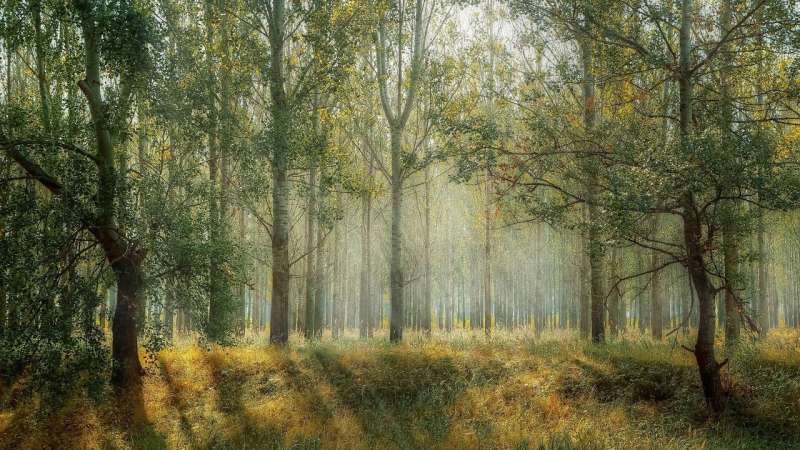Increasing forest diversity insufficient in the face of extreme drought events

Trees of different species tend to compete less with each other in the use of forest resources. That is why forest diversity may exert a beneficial effect on their productivity stability when facing climate changes. But does this solution always work? A research group led by the Complutense University of Madrid in which the UPV/EHU-University of the Basque Country has participated confirms this beneficial effect on productivity, though when facing extreme climate events such as major droughts, this improvement is not observed.
The results, published in Forest Ecology and Management, warn that in a context of increased aridity and frequency of extreme events, adaptation measures such as the increase in diversity may not suffice to offset the consequences of climate change.
Individuals of different tree species tend to use resources differently, so they compete less with each other than if they all belonged to the same species. That is why increasing forest diversity would improve their productivity thanks to growth that is more stable in the event of environmental fluctuations. However, it was not known whether the mixture of different species was also as beneficial in forests with water limitations, such as the Mediterranean ones, and in response to extreme events.
"Our study shows that the biodiversity-productivity relationship in Mediterranean forest ecosystems is linked to an increase in growth stability, but in the response to extreme events, the positive effect of diversity appears to be diluted by the very sensitivity of the species to water stress and competition," explained Enrique Andivia, researcher in the Department of Biodiversity, Ecology and Evolution at the Complutense University of Madrid (UCM).
Examining pines and oaks in the Madrilenian mountains
To conduct the study, the researchers analyzed pine and oak individuals in mixed stands of both species as well as in unmixed stands on the Sierra de Guadarrama (Madrid). To justify the choice, Andivia said that "this sierra is an excellent case because the mountainous Mediterranean areas are hotspots for exploring the consequences of climate change on the dynamics of plant communities."
By applying dendrochronological techniques (the study of tree rings) the growth of 120 trees throughout their lifetimes was reconstructed, focusing above all on the last 60 years in which their growth response to various events of extreme drought was quantified.
The experts have revealed the complexity of positive and competitive relations between species, which may vary according to climate fluctuations. "These results have significant implications for forestry management, specifically for adapting our forests to climate change," concluded Asier Herrero of the Department of Plant Biology and Ecology at the UPV/EHU.
More information: Francisco J. Muñoz-Gálvez et al. Are pine-oak mixed stands in Mediterranean mountains more resilient to drought than their monospecific counterparts?, Forest Ecology and Management (2021). DOI: 10.1016/j.foreco.2021.118955
Journal information: Forest Ecology and Management
Provided by University of the Basque Country





















